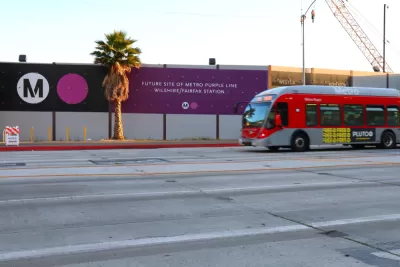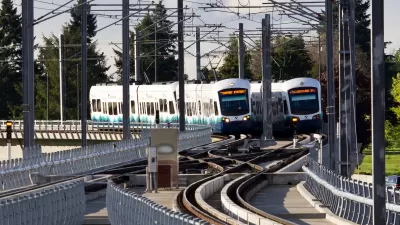The Eno Center for Transportation launched the first institutional investigation of the cost of transit projects earlier this year and recently released its initial findings, with promises for more in-depth case studies to come.

The Eno Center for Transportation released the first product of an initiative launched in late 2019 to study the high cost of public transit projects in the United States, building on the momentum of new public and media attention to the problems of transit construction.
The initial public offering is a database of transit capital construction projects, including "construction cost and timeline data for a total of 171 domestic and international rail transit projects completed over the past 20 years," according to an article on the Eno website that shares insights into the database. "For each project, factors such as number of stations, grade alignment, station spacing, and mode allow for deeper comparisons."
The article lists five key takeaways from the new database:
- Light rail is not necessarily cheaper than heavy rail. Grade alignment, rather than mode, is the major determinant of cost.
- Many rail projects in the United States are relatively inexpensive
- The United States pays a premium for tunneled projects
- Cost variability increases significantly for tunneled projects
- Stations are expensive, but international projects include more of them
More details for each of those takeaways are included in the source article, as well as promises for further research.
FULL STORY: FIVE TAKEAWAYS FROM ENO’S TRANSIT CAPITAL CONSTRUCTION DATABASE

Alabama: Trump Terminates Settlements for Black Communities Harmed By Raw Sewage
Trump deemed the landmark civil rights agreement “illegal DEI and environmental justice policy.”

Planetizen Federal Action Tracker
A weekly monitor of how Trump’s orders and actions are impacting planners and planning in America.

The 120 Year Old Tiny Home Villages That Sheltered San Francisco’s Earthquake Refugees
More than a century ago, San Francisco mobilized to house thousands of residents displaced by the 1906 earthquake. Could their strategy offer a model for the present?

Ken Jennings Launches Transit Web Series
The Jeopardy champ wants you to ride public transit.

BLM To Rescind Public Lands Rule
The change will downgrade conservation, once again putting federal land at risk for mining and other extractive uses.

Indy Neighborhood Group Builds Temporary Multi-Use Path
Community members, aided in part by funding from the city, repurposed a vehicle lane to create a protected bike and pedestrian path for the summer season.
Urban Design for Planners 1: Software Tools
This six-course series explores essential urban design concepts using open source software and equips planners with the tools they need to participate fully in the urban design process.
Planning for Universal Design
Learn the tools for implementing Universal Design in planning regulations.
Clanton & Associates, Inc.
Jessamine County Fiscal Court
Institute for Housing and Urban Development Studies (IHS)
City of Grandview
Harvard GSD Executive Education
Toledo-Lucas County Plan Commissions
Salt Lake City
NYU Wagner Graduate School of Public Service





























